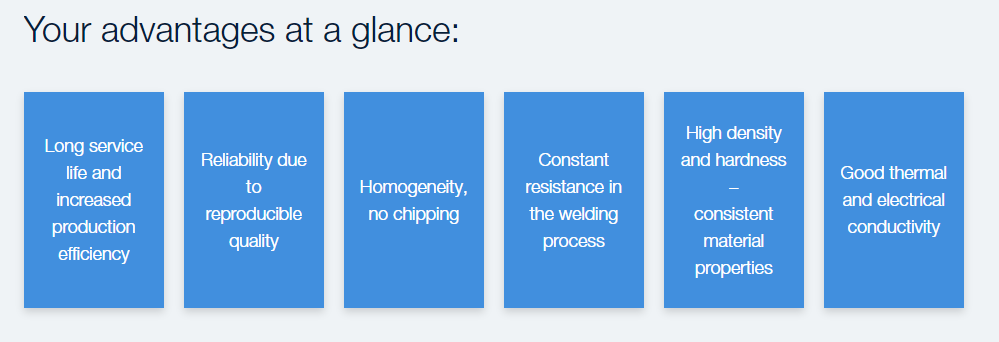Email:
sales@hypersolidmetal.comWhatsapp:
8618134799990
Email:
sales@hypersolidmetal.comWhatsapp:
8618134799990In the resistance welding process, the parts to be joined are pressed together and heated by an electric current until a molten pool forms at individual points between them. This process requires high currents and high pressing forces.
When welding thick sheets, the forces between the electrode and the parts to be joined can reach up to 450 MPa. This represents a major challenge for the welding electrodes that have to withstand these loads.
Our welding electrodes made of tungsten, molybdenum, and their alloys are particularly suitable for welding highly conductive materials such as copper. They are used in the following processes: spot welding, roller seam welding, projection welding, upset welding.

Projection welding is a version of spot welding. In this process, the weld is made at raised sections (projections) on one or both of the components to be joined. Heat is generated in the same way as with spot welding, except that it arises primarily in the region of the projections. Projection welding enables closer spacing of the welds. The “projections” can also be used for positioning. Projection welding is usually used to weld rivets, nuts, and other screws to metal plates.
Tungsten electrodes for thermode welding
We manufacture our tungsten electrodes for thermode welding according to your specifications to meet your exact needs. The strictest tolerances and uncompromising quality are just another day at the office for us. This is how we can guarantee that our thermodes are free of fissures.
Thermode welding is based on the principle of resistance welding. The current only flows through the electrode rather than between the workpiece and the electrode. The narrowing at the tip of the thermode increases the resistance, producing the welding temperature at this point. The tip of the electrode is able to melt the material across very small diameters at the desired welding point.


